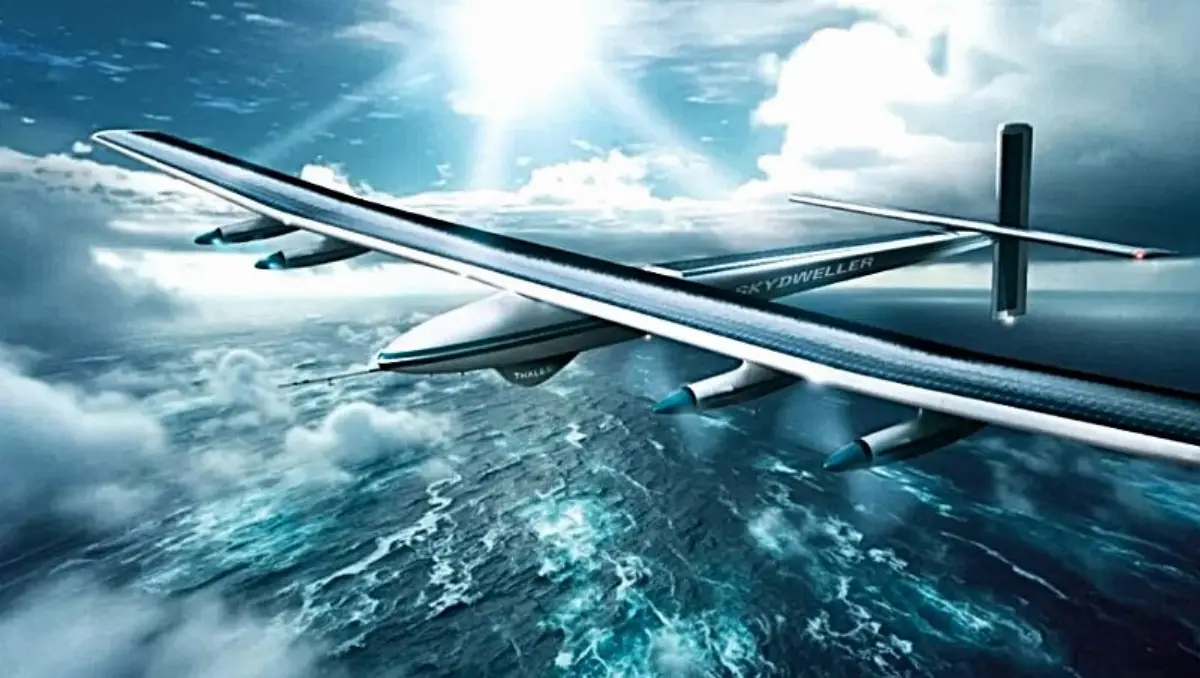
"Paris Air Show" (3): from Thales and Skydweller, a new era for maritime air surveillance
Solar drones and AI-based radar technology are redefining the future

The announcement from the "Paris Air Show" unveils an innovative solution for ultra-persistent patrol with zero environmental impact, aiming to strengthen security and sovereignty in complex scenarios
A strategic alliance between the French defense electronics giant Thales and the American start-up Skydweller Aero promises to redefine the future of aerial surveillance. The two companies announced yesterday, during the "Paris Air Show" (June 16-22) at Le Bourget, the development of an unmanned maritime patrol solution that combines the extraordinary endurance of Skydweller’s solar-powered aircraft with Thales’ sophisticated radar technology based on Artificial Intelligence.
At the heart of this innovation lies the Skydweller Maps (Medium-altitude pseudo-satellite), an autonomous drone aircraft powered by over 17,000 solar cells, capable of extreme endurance with flights that can extend from weeks to months and carry a significant payload of up to 400 kg. This feature clearly differentiates it from other solar drones, overcoming the typical payload limitations. Its operation "without the tyranny of distance" and with "zero carbon emissions" offers an almost continuous presence over sensitive areas, extending the reach of surveillance missions that require both persistence and operational performance.
Onboard the Skydweller Maps will be integrated the Thales AirMaster S radar, an advanced system featuring AESA (Active Electronically Scanned Array Antenna) technology operating in the X-band. This radar is no stranger to operational challenges, having already demonstrated its capabilities aboard the French Navy’s ATL2 maritime patrol aircraft. The AirMaster S is equipped with Smart Radar functionalities, enhanced by artificial intelligence, which allow optimal and autonomous adaptation to flight and mission conditions. Its ability for self-calibration and AI-based automatic target classification enables identification of points of interest within vast volumes of data, significantly reducing the amount of information transmitted to ground stations and providing operators with a clearer situational awareness. With a range of approximately 200 kilometers, the radar can simultaneously track thousands of targets both on water and in the air.
Philippe Duhamel, Executive Vice President of Thales' Defense Mission Systems division, emphasized how this collaboration represents "a true technological breakthrough for surveillance missions", highlighting the value of Thales’ Artificial Intelligence (AI) capabilities in radar systems. Echoing this, Sébastien Renouard, Chief Commercial Officer for Europe, the Middle East, and Africa at Skydweller Aero, added that the combination of the two systems "will change the paradigm for surveillance missions", offering a unique solution to current sovereignty challenges and strengthening security for NATO, the EU, and allied Western democracies.
Initially targeting military customers, the two companies also see interest extending to emergency civil services and border control agencies, particularly in Europe and the United States. The proposed solution positions itself as a highly competitive and "very disruptive" alternative to existing platforms such as the General Atomics MQ-9 Reaper, with operating costs estimated to be five to ten times lower.
Skydweller’s drone persistence enables an almost permanent presence in sensitive geographic areas, complementing and supplementing existing resources such as satellites, other types of drones, and crewed aircraft. While the French Navy’s ATL2 performs many other functions, the Skydweller offers continuous surveillance, freeing up other assets for specific missions.
Regarding operational zones, the solar drone can operate continuously up to approximately 40 degrees north and south of the Equator, and in polar regions during Summer. Operations during the polar Winter would be limited to daylight hours due to reduced sunlight. Skydweller is working to further extend endurance, aiming for 90 days of continuous operation as a first major milestone, with the potential to reach a year, while planning predictive maintenance phases.
Thales is now proceeding with radar integration on the platform, expecting to sign the first contracts "very soon", marking a significant step toward a new era of aerial surveillance.
AVIONEWS - World Aeronautical Press Agency